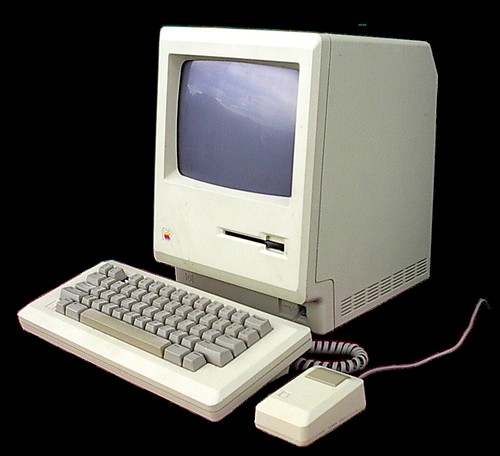Well! I mentioned the other day that Pixelmator is my favorite photo editor, and when 2.0 comes out, it will be awesome. And now it has, and it’s, well, maybe awesome is too much, but it’s pretty nifty. Maybe someday I’ll have time to post a review.
Category Archives: Technology
Photo Manipulation Tools
Here are some of my favorite tools for working with digital images.
Pixelmator. This is my go-to program for digital images, and someday they’ll ship 2.0 and it will be awesome.
Xee calls itself “a lightweight, fast and convenient image viewer and browser.” I agree. The best feature, for my money, is that it lets you losslessly rotate and crop JPEG images. You can do that with jpegtran too, but that’s a command-line tool. Those are great for batch jobs, but image cropping is almost always better done using an interactive GUI front-end.
Acorn is my second-favorite image editor. If Pixelmator wasn’t so darned good, this would be my favorite. Usually what brings me to Acorn is when I need to do something with filters and I can’t figure out how to do it in Pixelmator. The tech support is great, too.
Speaking of filters, I like to goof around with FX Photo Studio, too. MacPhun, the maker, also makes a cute one-trick-pony called Color Splash Studio which is worth the $2 I paid for it.
I also use a ton of different command line tools. I’ll write about those someday Real Soon Now.
Leaving iPhoto
Yesterday I did an “empty trash” command in iPhoto, to expunge 27 thousand photos I’d just deleted. Characteristically, the application hung. Well, it probably didn’t hang. After half an hour, I did a force quit, and on reopening the program and emptying the trash again, it told me there were about 5,000 photos to be deleted. Another 15 minutes wasn’t enough time for iPhoto to clean them up, so I force quit again, broke out a shell in Terminal and did:
$ cd ~/Pictures/ $ rm -rf iPhoto* $ cd ~/Library/Caches $ rm -rf com.apple.iPhoto
…which fixed things very nicely.
So ended a 27-month experiment with Apple’s end-user image management software. They also have a “pro” or “prosumer” product called Aperture, and if iPhoto is any indicator, I wouldn’t have it, even gift wrapped.
Between 2001 and 2009, I’d used my own set of tools to manage and manipulate my digital images, but when I got the MacBook, I decided to try iPhoto. That was two versions ago, and the things I disliked with ’09 weren’t fixed in ’10, and there wasn’t any sign they’ve been fixed in ’11 either.
What are those? Primarily two things:
- Speed. Or rather, its lack. The software just wasn’t very responsive. Dragging the elevator on a scroll bar felt sluggish, and if that’s not easy, what good is a photo management app?
- Noise. Running iPhoto was like playing Flash videos on YouTube: both cause my computer to heat up to where the fan runs. It doesn’t matter what I was doing in iPhoto; I could go away and drink a cup of coffee and it would just start overheating all by itself.
Now, I had some other complaints as well. I don’t need face recognition, and I would like text search, but Apple evidently has the opposite set of priorities. I would love to have uploads to social media sites, but the iPhoto way didn’t win me over at first blush, so I used other tools.
Sometime this summer, I gave up on iPhoto. Since then, I’ve spent my free time copying files out of the iPhoto library and renaming them and filing them elsewhere. I’d like to have tags, but what I’ve learned in 30 years with a Unix shell is that find(1) is pretty good at finding things:
$ find . -name '*whatever*'
for some really tricky things, I break out grep:
$ find . -name '*whatever*' \ | egrep -i 'one thing|another' \ | egrep -v 'but not this'
Yesterday, I finished the conversion and (after making lots of backups in lots of places on multiple drives), I emptied the trash in iPhoto. My fan hasn’t run since then.
I also noticed that while those 27K photos took 41 GB of space in iPhoto, they only occupy 38 GB in the filesytem. What was iPhoto doing with the other 3 GB?
Recovering eight or ten percent of a dataset isn’t chopped liver, but the space saving may prove eventually to be even more significant. iPhoto is monolithic. (By default, at least.) You put your files in there, and it’s a huge black box and you don’t need to worry your pretty head about what’s going on inside. But the filesystem gives me all kinds of options about how to manage my image files. For example, I can put different subsets of the data on different media, with symlinks connecting one part with another.
For now, I’ve stored everything in a single master folder. Within that, files are stored by year (2001, 2002, etc.). Within a year’s folder, I typically store files by the month (01-jan, 02-feb, …). Since I take the most photographs when I’m on vacation, I sometimes put vacation photos in their own folder (04-vac, etc.). Finally, I have a separate folder for video files called ‘movies‘. Those files are typically 10x or 20x as big as a photo, but I only have a handful, so I manage them as a collection.
The files themselves are typically given descriptive names (accident-minivan-01.jpg, home-oleanders-07.jpg) etc. Because I do so much work from the command line, I don’t put spaces in the names. In lieu of a space, I prefer a hyphen (-) to an underscore (_) because it doesn’t require a shift key.
In my next post, I’ll run through the tools I use to manipulate images.
I want this software
Watch this video to see the state of the art in putting nonexistent objects into photographs. When this becomes popular, we won’t be able to trust our eyes any more. (Via Cmdr Taco on Google Plus.)
Steve Jobs, 1955-2011
This was my first computer:
The 512 kB “Fat Mac.” With an ImageWriter, Microsoft Word and Multiplan (the predecessor of Excel), and MacPascal, it set me back about $2,500. That was 1985 money, so it would be somewhere around $5,000 today.)
I was living in Albuquerque and my roommate, who drank deep of the Kool-ade, had been so affected by Ridley Scott’s 1984 “Big Brother” commercial that he ran out and bought one of the original 128 kB Macs. (If I recall, he bought some Apple stock too. I wish I’d done that when I bought my second Mac, an iBook, in 2003.)
Anyway, a couple of years later, I was working at Bell Labs in New Jersey, and Steve Jobs wasn’t working at Apple any more. He came to Murray Hill to give a presentation of the NeXT computer. I didn’t work at Murray Hill — that was the real Bell Labs, where they got Nobel Prizes in Astrophysics and worked on slug brains. I just worked for AT&T’s R&D unit. But I got to see the presentation way down in South Jersey via the magic of teleconferencing.
By today’s standards, NeXT mail wasn’t all that hot: it was basically email with MIME attachments. But I don’t think he was trying to sell Unix workstations to Bell Labs. (Who would be stupid enough to give up a 3B2 with a BLT running Plan 9 for a mere NeXT box? Ahem. Although, to this day, I’m not personally convinced that email improved when it grew to include anything beyond ASCII text.)
What Steve was doing, I think, was giving AT&T some (desperately-needed) business advice. I admire his chutzpah: a kid in his 30’s, who’d just been sacked by his board, telling AT&T how to do business. But that’s what he was doing.
He was telling them that AT&T Mail was a disaster, particularly compared to what he was selling. But more than that, he was telling them to stick to their core competency. Instead of chasing him (or ignoring him and Inventing-It-Here, as Bell Labs was, ahem, wont to do), he said that AT&T should sell him connectivity. Just give him pipes to move his bits around, that’s what he wanted.
People talk about Steve’s “reality distortion field.” But that day, nobody was buying what he was selling.
That’s a hard message to sell to companies like AT&T. There’s some weird virus that infects marketing people at telecoms that makes them think it’s possible to add value to every bit that passes through their network. Indeed, that it’s not only possible, but their company is also capable of doing it!
Yes, yes, it’s a preposterous notion, but nevertheless, telecom marketers are all infected with it. Twenty-five years later, they still have it. They just can’t stand the idea of simply doing their core business well. They’re terrified of becoming a commodity.
Steve Jobs wasn’t worried about becoming commoditized. None of the businesses he built into category killers are commodities. Pixar is head and shoulders above everyone else in the business. The Mac stands out and commands a price premium in a world of commodity computers. Ditto the iPod, the iPhone, and lately the iPad.
Business is infected with the opposite approach. One of my managers at Bell Labs told me to quit improving a piece of software this way: “You’re polishing a turd.” Steve Jobs knew that you couldn’t make a great company by shipping turds, so he kept polishing products until there wasn’t anything turdlike about them.
Good for him. It will be interesting to see if anyone learns the lesson.
MacPorts tip
I started getting messages when I tried to update my MacPorts tools. I can’t say when it started, because I don’t do it very often. (Like maybe once a month. Bad me.) But it would bomb out, telling me
Error: checksum (md5/sha1/rmd160) mismatch for port.
Then it sent me down a wrong path, suggesting it was because my ISP’s DNS was serving ads or something. But it turns out the why isn’t important, because the what to do about it was right there in the FAQ:
$ sudo port selfupdate
$ sudo port clean --dist {portname}
$ sudo port install {portname}
All I had to do was clean out the bad portfile and try again.
Diff Tools
My favorite diff tool is FileMerge, one of Apple’s developer tools, which can be accessed from the command line as opendiff.
But from the command line, my (next most) favorite diff tool is colordiff. It’s called that because it color-codes the output when it’s used interactively, making it IMHO easier to see what’s changed. Actually, colordiff is just a wrapper around the real diff tool.
Another nice tool is dwdiff, which is compares two documents and highlights the different words rather than the different lines. So does wdiff.
(Back to my list of Unixy tools for the Mac.)
Smart Playlists Just Got Dumber
I mentioned recently how handy it can be to create complex “Smart Playlists” in iTunes. Suppose you want to make a smart play list like this one:

It says the songs in this new playlist have to be “My Non Dogs.” (My Non-dogs is another playlist that includes songs that are either unrated or rated 3 stars or above.) But besides not being dogs, this playlist’s songs also need to be performed either by David Byrne or by the Talking Heads. In other words, iTunes gives us a friendly way to construct a query using boolean algebra.
Prior to iTunes 10.4, that was easy enough. There were little buttons at the end of the pane. A ‘-‘ button deletes the rule; a ‘+’ button adds a new rule; a ‘…’ button makes a rule with multiple conditions, as above:

The problem is that iTunes 10.4 got rid of the ‘…’ buttons:

Smart playlists can still use boolean algebra: all my old lists still work. The only problem is trying to make a new one. How do you push a button that’s not there?
The answer is to hold down the option key. Then the ‘+’ buttons become ‘…’ buttons:

I should point out that taking a screenshot is a lot more difficult when you’re holding the option key. The only way I could figure out to do it was by doing a “Timed Screen Grab” using the Grab utility:

Dragon Dictate 2.5 – not interested
I won’t be taking advantage of the offer I was emailed today, announcing the opportunity to spend $100 to upgrade from 2.0 to 2.5 of Dragon Dictate.
I like that software, I truly do. In five or ten years it will be awesome, and everyone will use it, or something like it.
But today, using it can still be intrusive and clunky. (See my list of complaints here.)
But the real problem is that the company is simply insane with their pricing. For doctors and legal people, they have specialized products with even crazier pricing. But for ordinary people like me, I’m sorry, I quit. It just costs too much.
Take this release. (Please!) It’s a hundred bucks to upgrade. With the exception of the Microsoft Office Suite, I can’t think of a single product I use that costs over $100, brand new. The idea of an upgrade costing $100 is insane.
But maybe if it’s a really impressive upgrade? Like, from 2.0 to 3.0? No. A hundred bucks is still too much. And, frankly, I never saw that much improvement using Dragon 2.0 over MacSpeech 1.5, so I’m not even sure about major version upgrades. Maybe things improved for them, but for me, none of the changes I did see were improvements.
Besides, this isn’t 2.0 to 3.0. They call it 2.0 to 2.5, but there never was a 2.1, so calling it 2.5 is a feeble attempt to make it seem like a more major upgrade than it is, while admitting it really isn’t much of an upgrade. But Nuance or MacSpeech or whatever they were then pulled the exact same stunt with 1.5 just a couple of years back. “Fool me once…”
But version numbers are just marketeer’s puffery. What new features does it provide?
Supposedly, it gets in your way less than the old version. They now recognize that people use their keyboard and mice even when operating voice recognition software. Good for them. That’s a 2.1 feature if I ever heard of one.
- Better integration with Microsoft Word 2011? That’s a 2.01 feature.
- Using an iPhone as a remote microphone? Generously, a 2.1 feature.
- Social media commands? Puh-lease.
- Better auto-formatting of dates, numbers, etc.? 2.01.
Ah, but now, at last we come to the real reason they want me to upgrade: it doesn’t support Mac OS X 10.7 “Lion.” Whiskey-tango-hotel? That’s not a reason to buy an upgrade. It’s a reason to flood their tech support lines demanding a fix.
(Note: the ArsTechnica story says it’s a free upgrade to 2.0 users. Not so, according to the email I got from Nuance.)
iTunes playlists, Drag’n’Drop, and Wacom tablets
I noticed that with iTunes 10.4 (80) I can no longer drag songs from one playlist to another. It doesn’t matter whether the source is a smart playlist or a regular dumb one, or even the main music library.
As a workaround, I can copy (cmd-c) and paste (cmd-v), but this is … umm … sub-optimal, because you have to change playlists to do it. Then when you go back to the first folder, any search you might have used before is now gone.
My first thought was that it was a feature that Apple just dropped because that’s how they are, so I posted it to the discussion list on Apple’s site.
But when I made a more serious effort to find the solution, I found it. I found it a lot, in fact, which shows what a lousy job I did searching for an answer the first time. I summarized what I learned there, and I’m repeating the key points below because I’ll find them quicker on my own site.
The problem appears to be using a Wacom tablet. See the discussion here and (same thread) here and here. No idea when that will be fixed. I use a 8 or 9 year old Graphire, and drivers have been a problem for most of those. Sigh.
But this experience also made me learn that you can right click to add selections to a playlist.
I even learned how that first column works, which I never knew before.
